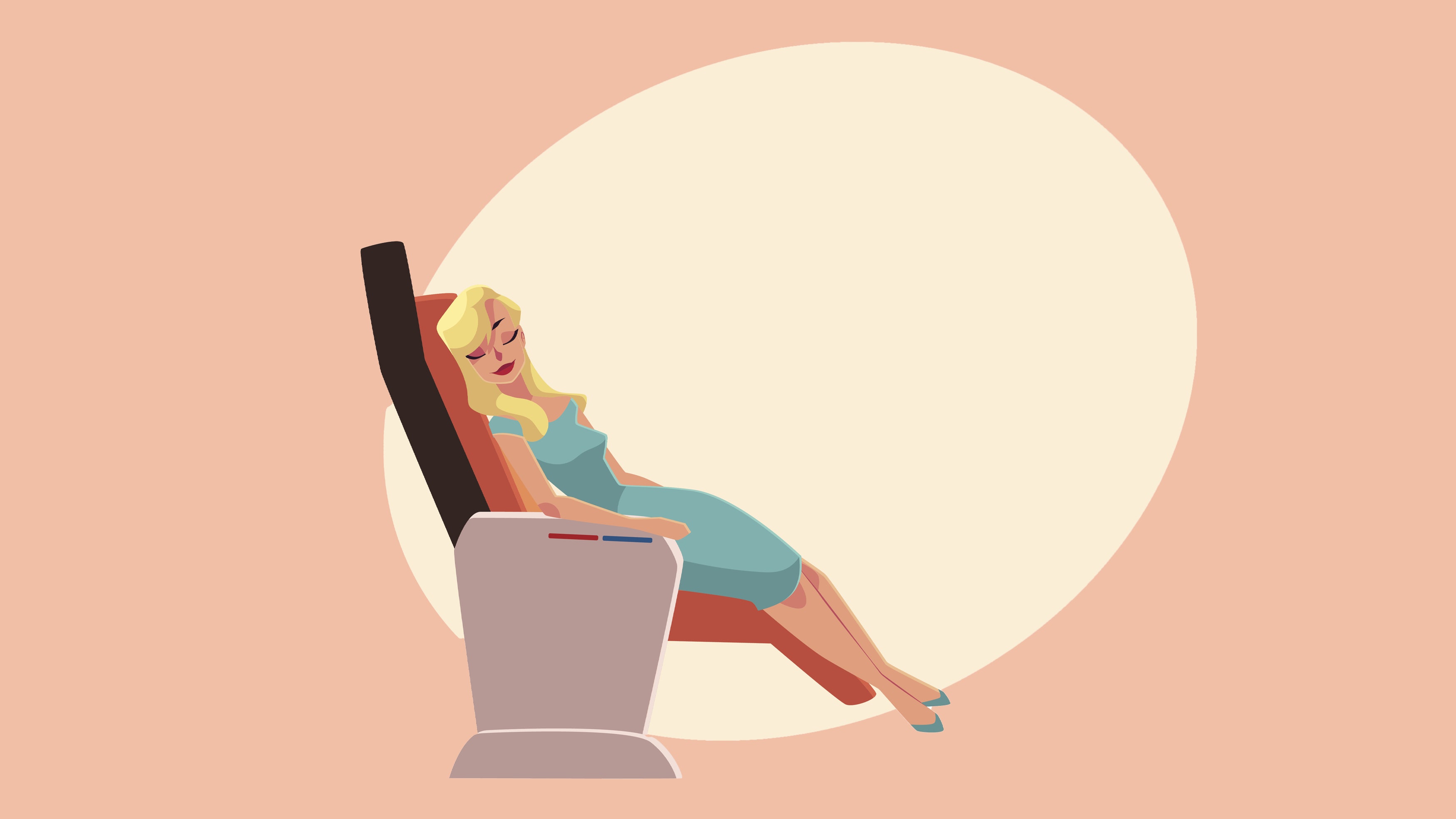
A FLIGHT ATTENDANT’S GUIDE TO SEAT RECLINING ETIQUETTE
Flying is a stressful ordeal, and when it's possible—especially on a long-haul flight—people want to kick back and relax. But in today's tightly packed plane cabins, one passenger's comfort is often another's discomfort.
The moment a passenger decides to recline their seat on a plane, they will unavoidably take away some, if not most, of the personal space from the passenger sitting behind them. As a flight attendant with six years' experience working for a major international airline, I regularly deal with passengers arguing over when it's appropriate to exercise this right to recline.
I remember flying from Bangkok to Sydney when a passenger got up and began whacking the passenger in front of them with a rolled-up in-flight magazine simply for reclining their seat. Ask any flight attendant; we all have similar horror stories. (It doesn't help that recent years have seen an increasing number of disruptive passengers, according to Federal Aviation Administration data.)
Flight attendants take resolving any form of disruption very seriously: the well-being and safety of passengers is our top priority. In this case, for reclining seats, it really depends on what elements you have at play. Sometimes a conversation with both passengers suffices; other times you remove the offended passenger to a separate seat. Occasionally, you just have to put your foot down and remind everyone that certain types of behavior are simply unacceptable.
In my experience, a lot of the time, it’s rarely about the reclined seat—there are underlying motivations for the stress, and the reclined seat simply serves as a trigger. Traveling can be tiring and stressful, and sometimes people just need an excuse to vent their frustrations.
With the increase in disruptions related to seat reclining, more airlines have eliminated the ability to recline entirely (which also doubles as a cost-cutting measure). Nowadays, most low-cost carriers don't have seat recline, and airlines like Delta have reduced the seat recline pitch from four to two inches. Some passengers have even taken matters into their own hands by using devices that impede seat reclining, called “'knee defenders.” While this may appear to be a fun travel hack, we don’t recommend using the controversial gadget, which is banned by many airlines. (In 2014, it even caused United Airlines Flight 1462 from Newark to Denver to be diverted to Chicago after a fight erupted between two passengers over the use of such a device.)
Perhaps the best solution so far has been the introduction of shell seats to premium economy cabins. Used by airlines like Air France, Japan Airlines, and China Airlines, shell seats allow you to recline forward into your legroom instead of encroaching backward into the passenger behind you.
There are pros and cons to every potential solution, and the debate over seat reclining is unlikely to be resolved soon. There is a delicate balance between personal comfort and collective courtesy—as flight attendants, we ask passengers to navigate this balance with empathy and understanding.
When and how to recline your seat on a plane
Airplane seat recline has become a heavily polarized debate, with few people occupying middle ground. Some people don't care if you recline your seat because they will likely recline theirs, too. Others will make sure you know just how unhappy they are with your choice.
"Sure, you paid for the seat and its functionality, so yes, by all means, recline. However, passengers need to listen to the safety spiel and erect it when told to do so, like for meal service, taxi, take-off, and landing," says Jamie, a flight attendant for a Middle Eastern carrier.
To minimize disruption, there are three golden rules to seat reclining etiquette that passengers can follow:
- Be courteous and ask: Just as every door has a knob to open it, every seat has a button to recline it. Think of the recline button like a door knob; before you use it, “knock on the door” by asking the person behind you if it's okay to recline your seat.
- Don't recline during meal service: If you find someone's seat recline annoying, wait until you try eating with your back hunched and the meal tray pushing against your abdomen. Believe me, it's not pleasant. Respect your fellow travelers and keep your seat erect during meal service.
- Use your judgment: Not all flights require reclining, especially if it's short. No matter the length of the flight, my top tip is always to take a peek and find out who's sitting behind you. Maybe it's a mother traveling with an infant on her lap, or someone who's very tall, or a business traveler working from their laptop on the tray table. Some people won't mind, but for others, it makes a big difference. Put yourself in their shoes, and remember they, too, want to travel comfortably.
“Passengers need to be mindful of their recline and assess the situation. Recently, a passenger hastily reclined his seat and broke the passenger's laptop sitting behind him,” says one flight attendant working for a major European carrier. "These incidents can be avoided by asking and being mindful."
So, the next time you reach for that recline button, take a moment to think about the person behind you. A small courtesy can go a long way in making the skies a more relaxed experience for fellow passengers and flight attendants.
- Want to be the first to know? Sign up to our newsletters for travel inspiration and tips
- The Best Economy Seats for Long-Haul Flights
- Cruise Etiquette: How To Get the Most Out of Shore Excursions
- This Airport Lounge Was Just Voted Best in the World—Here's What It's Like Inside
- This New Multi-Nation Visa Will Grant Tourists Entry to Six Gulf Countries